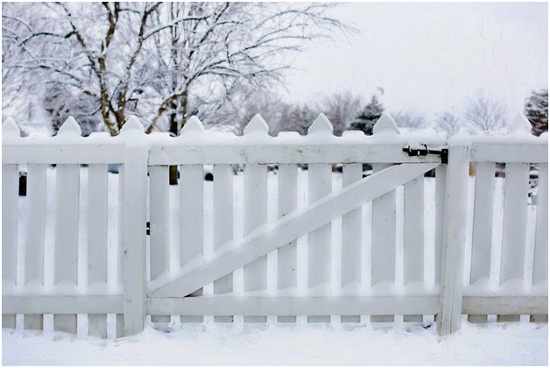Apart from the obnoxious visitors who take strolls in your backyard and ruin your prized flowerbeds, you are troubled by your neighborhood’s peeping toms who think it is their duty to keep a vigilant eye on you.
Putting up a fence for deterring the neighborhood from entering your property might be the only way to ensure maximum privacy at home. While fences are affordable and well-adjustable, you need to pick out the material that not only helps you achieve security and privacy but is aesthetic and resistant to the harsh turns of the environment.


Wood has been a constant mainstay of America’s fencing materials, given the popularity of the white picket fence that hung around for eras. While metal, aluminum, and vinyl are increasingly becoming popular, most people still prefer opting for wood when it comes to practicality, affordability and aesthetics.
Popularly, there are two types of wood – cedar and pine – that are used for building fences in modern-day America. But contrastingly, there are other types of wood, such as redwood, spruce, and pressure-treated wood that are making waves in aiding urbanization.
Mentioned below is a brief guide regarding the different types of wood for your property.
1) Cedar – the Red King
Cedar is the most popular type of wood for building a fence amongst native households, mainly due to the fact that it is long-lasting and does not require a fortune or external help for installation. While cedar is resistant to decay, it is, however, not impermeable to soil and can rot once it settles deep into it with time.
Maintenance Tip:
For promoting longevity of the cedar wood fence panels, you can either build fence posts with treated wood for securing the planks as it does not allow the soil to pass through.
You can also put down a concrete base and secure your fence during installation. Its slight reddish tinge can weather to a gray hue with time, and hence, requires maintenance upkeep as well as plank replacement with time.
While it can deter insects, you can paint it with a penetrating sealant so that it can resist corrosion and wear and tear for longer periods.
2) Redwood and Teak
While redwood looks a bit rusty around the edges, it is actually soft and full of natural luster. It is also resistant to decay and can prevent shrinking and warping from external exposures.
Redwood, however, requires a big pocket for installation, but nothing can compare to the protection it offers.
Similar to cedar, redwood and teak might be permeable to the soil, but will require replacement or maintenance upkeep only once or twice a year. Fences made of redwood are more popular for ensuring privacy within small surface areas, such as around pools or quaint backyards with flowerbeds.
Maintenance Upkeep:
Similar to cedar, it is advised to cover its luster with a penetrating sealant in order to maintain its natural color for a couple of years. You can also sand the fence’s surface before application in order to prevent permeation of soil and rotting of the wood material.
3) Pressure-treated Pine
Pressure-treated pine, despite being quite common, is susceptible to wear and tear and not as durable as cedar and other treated woods. It is usually treated with chemical preservatives, making it ideal for deterring insects but also quite toxic to children and pets.
The chemical infusion also helps to prevent it from corrosion, but it still might require maintenance upkeep with time.
Pressure or chemical treated wood is also ideal for constructing outdoor wooden furniture such as gazebos and decks. While it is more commonly used as fence posts, constructing a whole picket with treated wood will offer not only privacy but also pocket-friendly installation and maintenance upkeep.
Maintenance Upkeep:
While it can prevent moisture from seeping through, it is advised to choose planks that appear straight and dry instead of picking the damp ones as they can twist and warp within a month of installation.
Despite being quite reputable as fence posts, treated wood can warp and twist when installed as fence pickets – and that is perhaps, the only flaw with chemical-infused materials.
For best results, choose the driest planks at the lumberyard to prevent yourself from re-installing a warp-free fence in a month’s time. You can also cover them with a paint sealant for better preservation and aesthetics.
Before you make a choice, you need to get a permit from your homeowner’s association for building a fence around or on your property. All you need to do is call your local zoning office and inquire about the preliminary restrictions before planning on putting up a fence on your property line.
You might be restricted to different wood materials given their toxicity or hazards, as well as instructed to put up a fence to a specific height as per rules.
You surely do not want to go through all the trouble of putting a fence up only to tear it back down if you fail to comply with the limitations, do you?









